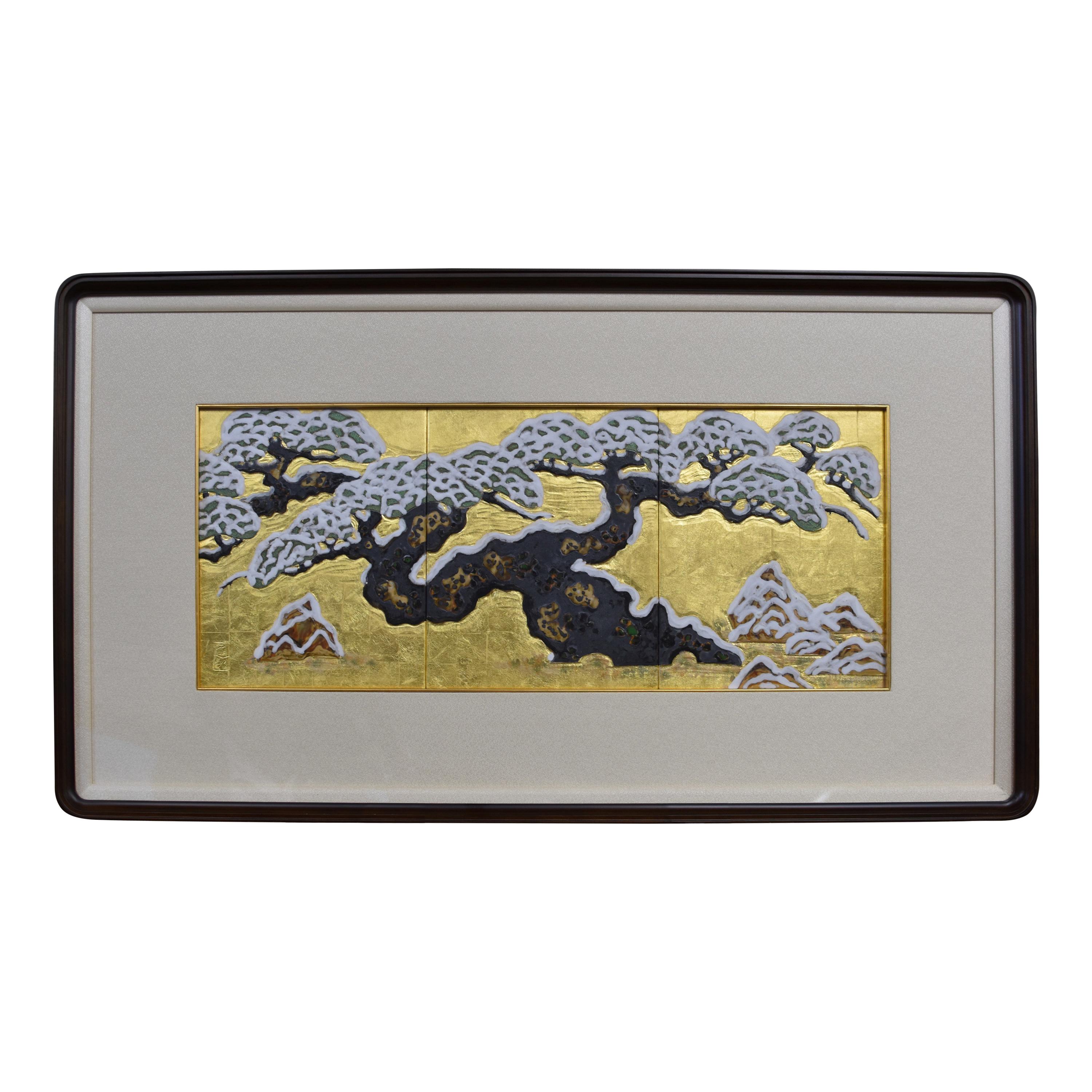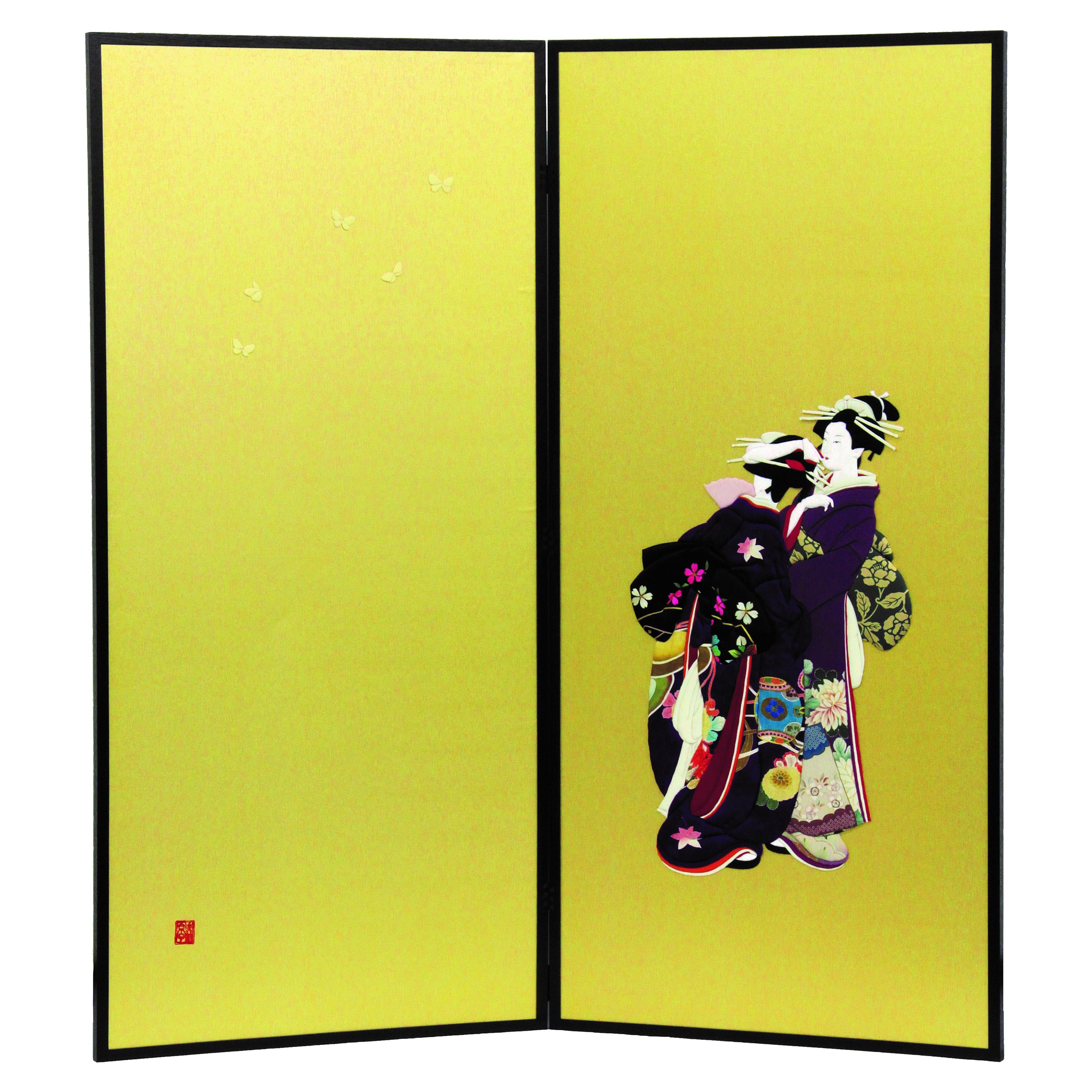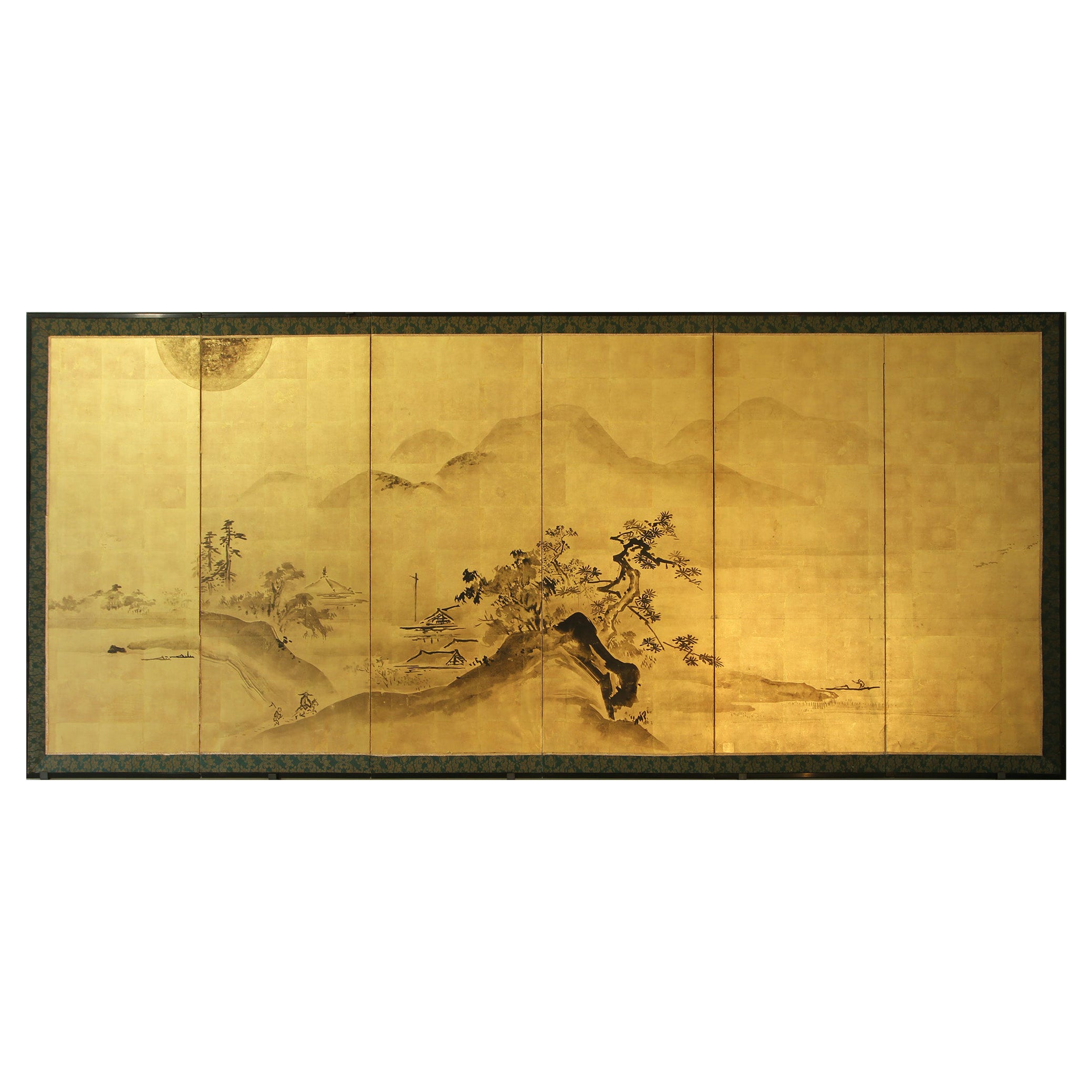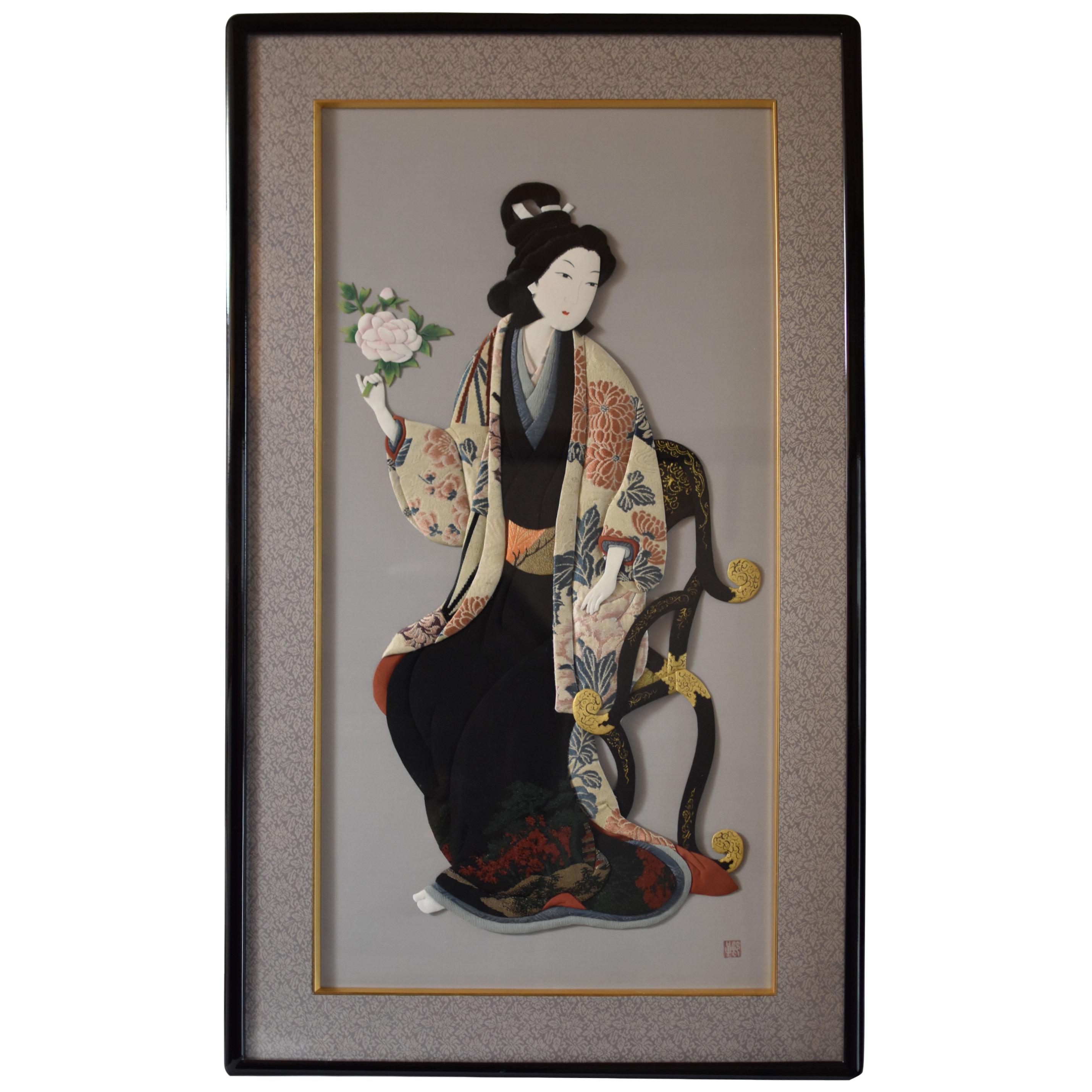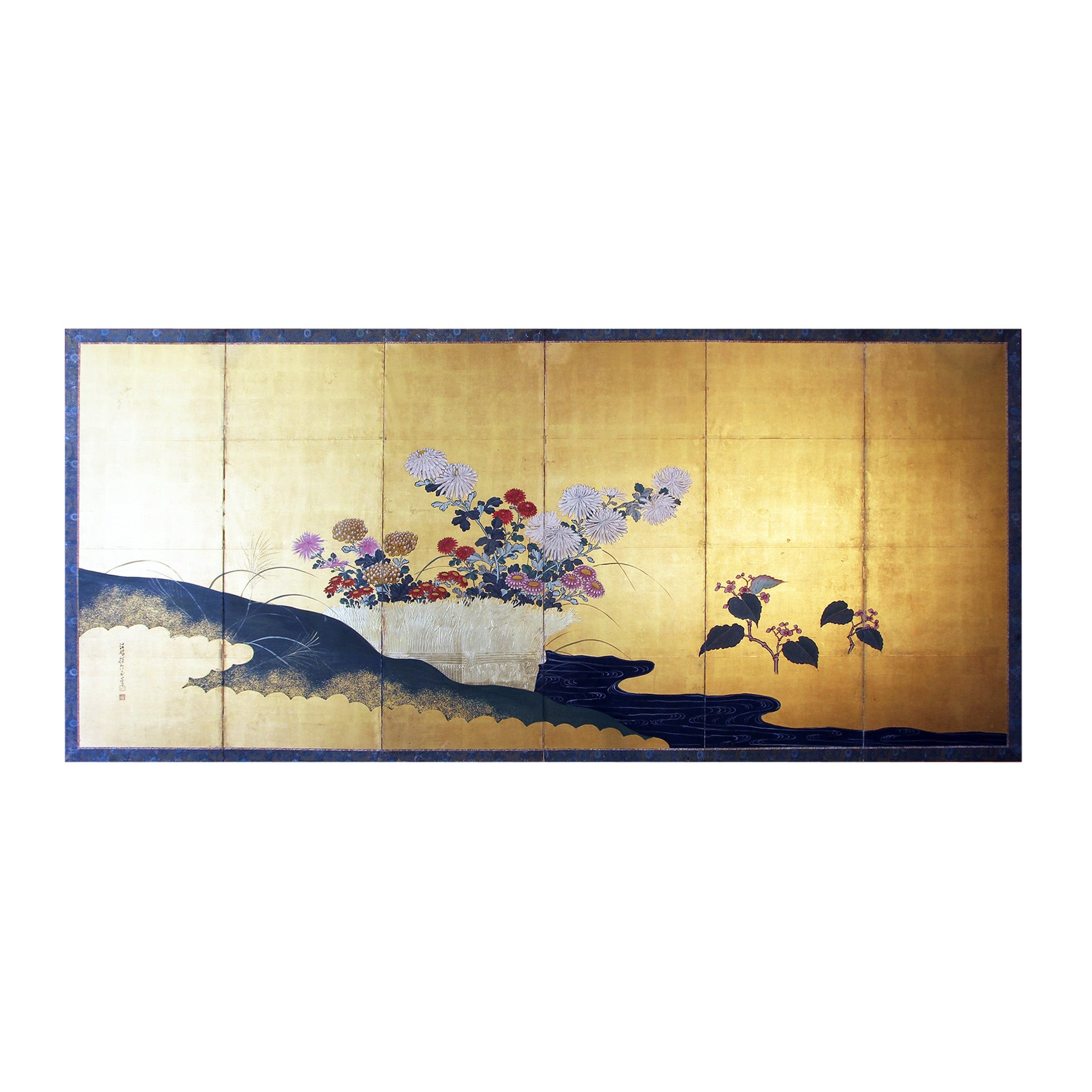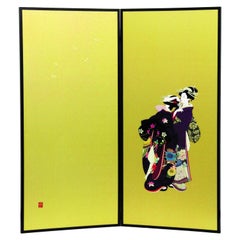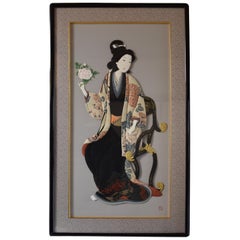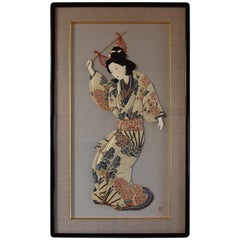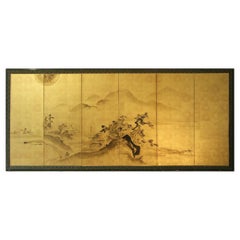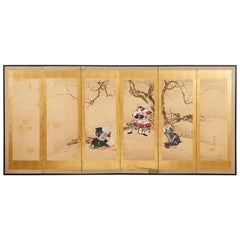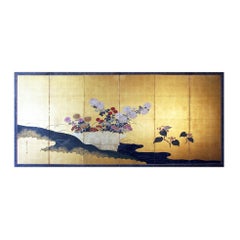Items Similar to Japanese Three Panel Framed Gold Black White Porcelain Artwork by Master Artist
Want more images or videos?
Request additional images or videos from the seller
1 of 7
Japanese Three Panel Framed Gold Black White Porcelain Artwork by Master Artist
$16,500
£12,615.13
€14,530.08
CA$23,121.56
A$25,813.05
CHF 13,525.65
MX$315,977.02
NOK 171,775.87
SEK 161,962.83
DKK 108,439.48
About the Item
Extraordinary Japanese contemporary three-panel framed porcelain artwork in gold, black and white. This is a masterpiece by a third generation master porcelain artist in the Imari-Arita region of Japan who is the descendant of an extended family of prolific porcelain and ceramic artists. The artist's profile is available upon request.
The kiln started in the 19th century with traditional kinrande techniques (gold enameled porcelain), but in accordance with the philosophy of the kiln’s founder, each subsequent generation pioneered in a field of the master’s choosing. Thus, the second generation is known for its yuri-kinsai (gold foil underglaze) and the third generation for its haku-yui (intertwining of precious-metal foils).
Yuri-kinsai was termed in the 1950s as a new glazing technique. The main feature is a highly transparent overglaze on the gilded porcelain, cutting out stencils of gold foil for underglaze decorations.
In this exceptional work, the artist has used gold leaf, black and white for expressing the dramatic scene of Tawaraya Sotatsu's influential "Wind God and Thunder God" that is considered a Japanese National Treasure. It is a pair of two-folded screens using ink and color on gold-foiled paper, depicting "Raijin," the god of lightning, thunder and storms with it's origin in the Shinto religion and Japanese mythology, and "Fujin," the god of wind. Here the scene has been showcased, set against a gold leaf background of high purity gold. Three porcelain panels showcase this scene.
This framed piece is a breathtaking artwork that attracts the viewer to approach it and enjoy the details.
The three generations of the Kosan Kiln located in the Imari-Arita region of southern Japan (starting in 19th century,) have been experimenting and perfecting techniques featuring gold foil for seven decades. Inspired by centuries-old kinrande (gold enameled porcelain) styles of Imari, the artists have developed a technique known as haku-yui (braided foils) that combines high purity gold, platinum and silver foils to create a shimmering palette of light and color. Silver foil is used exclusively as a substrate for expressing a wide spectrum of vivid colors. Foils of differing material and color are applied separately and at the rate of “one shade per day” in a process reminiscent of multi-color woodblock printing, implying that the addition of each new shade exponentially increases the time and complexity of production.
This exceptional framed porcelain artwork comes in a custom made wooden case signed by the artist.
Dimensions: framed: H 19 in W 47 in D 2.5 in
panel: H 30 in W 30 in D 1.5 in
- Dimensions:Height: 19 in (48.26 cm)Width: 47 in (119.38 cm)Depth: 2 in (5.08 cm)
- Style:Meiji (In the Style Of)
- Materials and Techniques:
- Place of Origin:
- Period:
- Date of Manufacture:contemporary
- Production Type:New & Custom(One of a Kind)
- Estimated Production Time:Available Now
- Condition:
- Seller Location:Takarazuka, JP
- Reference Number:Seller: CVON1stDibs: LU2771343174332
About the Seller
5.0
Vetted Professional Seller
Every seller passes strict standards for authenticity and reliability
Established in 2009
1stDibs seller since 2017
231 sales on 1stDibs
- ShippingRetrieving quote...Shipping from: Takarazuka, Japan
- Return Policy
Authenticity Guarantee
In the unlikely event there’s an issue with an item’s authenticity, contact us within 1 year for a full refund. DetailsMoney-Back Guarantee
If your item is not as described, is damaged in transit, or does not arrive, contact us within 7 days for a full refund. Details24-Hour Cancellation
You have a 24-hour grace period in which to reconsider your purchase, with no questions asked.Vetted Professional Sellers
Our world-class sellers must adhere to strict standards for service and quality, maintaining the integrity of our listings.Price-Match Guarantee
If you find that a seller listed the same item for a lower price elsewhere, we’ll match it.Trusted Global Delivery
Our best-in-class carrier network provides specialized shipping options worldwide, including custom delivery.More From This Seller
View AllJapanese Contemporary Gold Leaf Brown Framed Porcelain Panel by Master Artist, 3
Located in Takarazuka, JP
Exquisite museum quality Japanese contemporary framed porcelain panel art work consisting of three pieces intricately hand-painted showcasing a wintry ...
Category
21st Century and Contemporary Japanese Meiji Decorative Art
Materials
Gold Leaf
Japanese Contemporary Black Gold Silk Brocade Two-Panel Folding Screen
Located in Takarazuka, JP
Exceptional Japanese contemporary two-panel "byobu" or folding screen featuring two graceful ladies dressed in elegant formal traditional Japanese kimonos. This folding screen is ins...
Category
21st Century and Contemporary Japanese Meiji Paintings and Screens
Materials
Gold
Japanese Contemporary Framed Brocade Silk Handcrafted Oshie Decorative Art, 2
Located in Takarazuka, JP
Extraordinary unique Japanese Contemporary large framed and signed traditional Oshie decorative art piece in black and cream, known as oshie (literally, “pressed pictures”) that goes back to the Edo Period (1603-1868). It is said this art form was born of the reluctance of ladies of the court and elite aristrocratic women to discard the magnificent silk kimonos and brocaded obi they had donned for a lifetime. The solution was to recycle these opulent fabrics into stunning works of art. The creator of this signed piece prides herself in using the best antique and vintage kimono and obi fabrics...
Category
21st Century and Contemporary Japanese Meiji Paintings and Screens
Materials
Brocade, Silk
Japanese Contemporary Brocade Silk Handcrafted Framed Oshie Decorative Art
Located in Takarazuka, JP
Exquisite Japanese contemporary framed oshie wall decorative art piece, recreating a famous painting from Meiji period featuring a Japanese dancer holding a net with cherry blossom ...
Category
21st Century and Contemporary Japanese Meiji Paintings and Screens
Materials
Brocade, Silk
Large Framed Silk and Brocade Japanese Contemporary Oshie Wall Decorative Art
Located in Takarazuka, JP
Large Japanese contemporary framed silk and brocade Oshie wall decorative art, exceptional Japanese contemporary framed and signed three-dimensional wall decorative art piece in silk...
Category
21st Century and Contemporary Japanese Decorative Art
Materials
Brocade, Silk
Japanese Large Contemporary Yellow Black Gilded Raised Silk Folding Screen
Located in Takarazuka, JP
Japanese contemporary two panel folding screen or "byobu" featuring genryoku style handcrafted raised silk kimono in yellow, black and gold on a cream color background. Tagasode is t...
Category
21st Century and Contemporary Japanese Paintings and Screens
Materials
Silk, Brocade
You May Also Like
Japanese Screen Landscape on Gold Leaf with Inks
By Japanese Studio
Located in Brescia, IT
Six-panel screen from the Tosa school painted with ink on gold leaf depicting a relaxing oriental landscape with pagodas, figures on boats and a beautiful sun in the sky.
The screen ...
Category
Antique Late 19th Century Japanese Meiji Paintings and Screens
Materials
Gold Leaf
Japanese Edo Six Panel Screen Yoshitsune and Benkei
Located in Rio Vista, CA
Spectacular 19th century Japanese late Edo period six-panel byobu screen depicting Yoshitsune and Benkei, two heroes of Japanese folklore. Crafted in ink and natural color pigments on mulberry paper with thick gold leaf borders on each panel. The character Yoshitsune is seated under a blossoming cherry tree in full armor holding a fan. The warrior priest or monk Benkei is depicted kneeling on a leopard skin...
Category
Antique 19th Century Japanese Edo Paintings and Screens
Materials
Brass, Gold Leaf
$3,400 Sale Price
29% Off
Japanese Byobu - Japanese Folding Screen Gold Leaf
By Japanese Studio
Located in Brescia, IT
Floral scene of a "Rimpa School" garden with polychrome chrysanthemum flowers.
Six-panel screen painted with pigments on golden rice paper of good size and well preserved.
Bold color...
Category
Antique Early 19th Century Japanese Edo Paintings and Screens
Materials
Gold Leaf
Japanese Two-Panel Screen Ikebana on Gold
Located in Hudson, NY
Japanese two-panel screen: Ikebana on gold. Meiji period (1868-1912) painting of a basket with beautifully arranged spring flowers in the style of ikebana (Japanese traditional flowe...
Category
Antique Late 19th Century Japanese Meiji Paintings and Screens
Materials
Gold Leaf
Framed Japanese Embroidery Textile Panel Meiji Period
Located in Atlanta, GA
A Japanese textile panel with embroidered picture work circa late Meiji period (1900s) presented in a gilt wood frame with silk mat. The work de...
Category
Antique Early 1900s Japanese Meiji Textiles
Materials
Silk, Wood
Rare Triptych Scroll Paintings by Watanabe Seitei Meiji Period
Located in Atlanta, GA
A set of three paintings of ink and watercolor on silk mounted within brocade borders as scrolls by Watanabe Seitei (1851-1918). This is a very rare an...
Category
Antique Early 1900s Japanese Japonisme Paintings and Screens
Materials
Brocade, Silk, Wood
More Ways To Browse
Japanese Light Shade
Screen Printing
Boxwood Art
Wooden Screen Panels
Painted And Stenciled Furniture
Wooden Asian Screens
Gilded Screen
Pair Of Japanese Screens
Black Abalone
Japanese Shinto
Metal Folding Screen
Folding Screen Gold Leaf
Two Panel Folding Screen
Gilt Folding Screen
Japanese Foil Art
Japanese Three Panel Screen
Japanese Silver Leaf Screen
Japanese Signed Two Panel Screen
